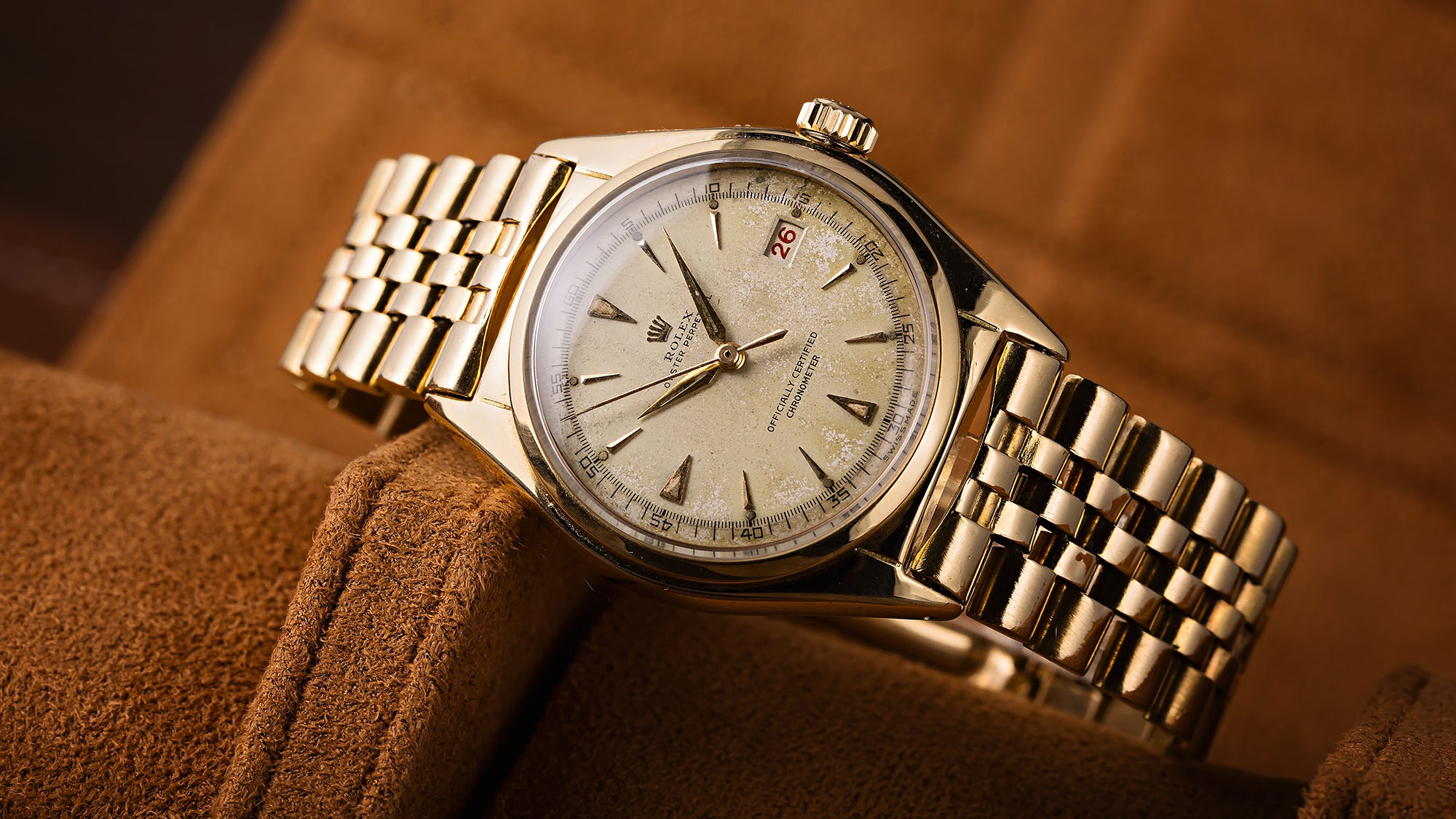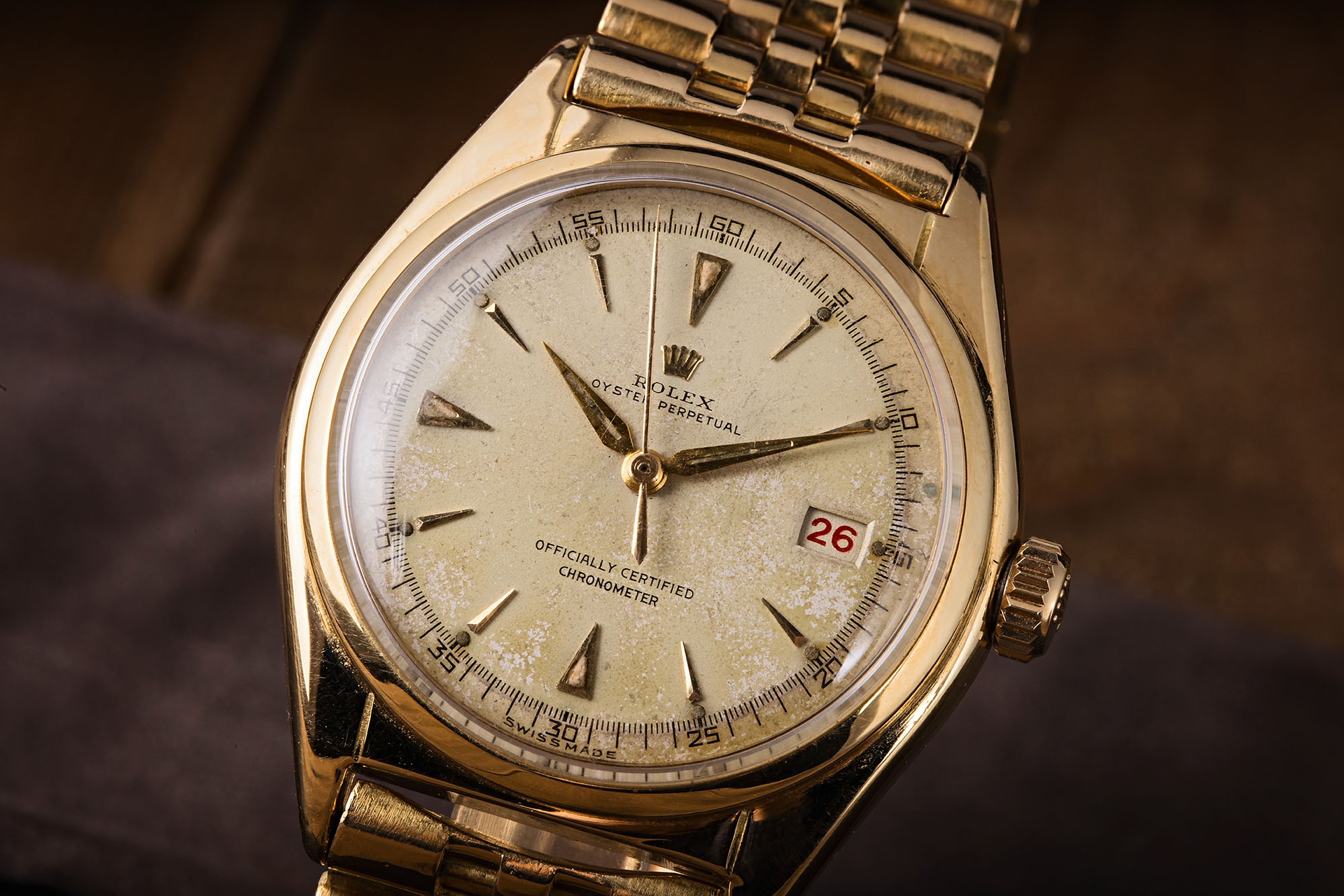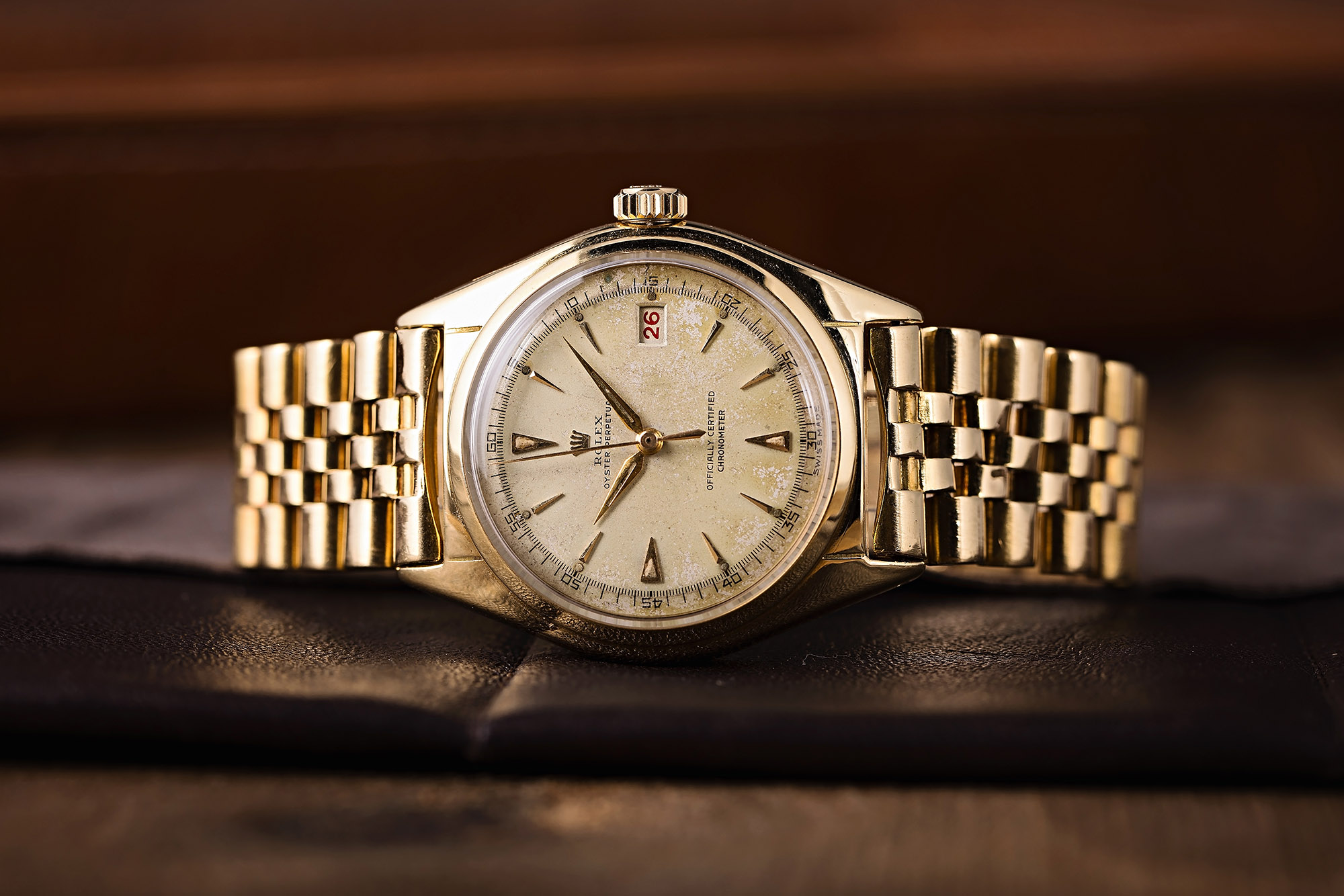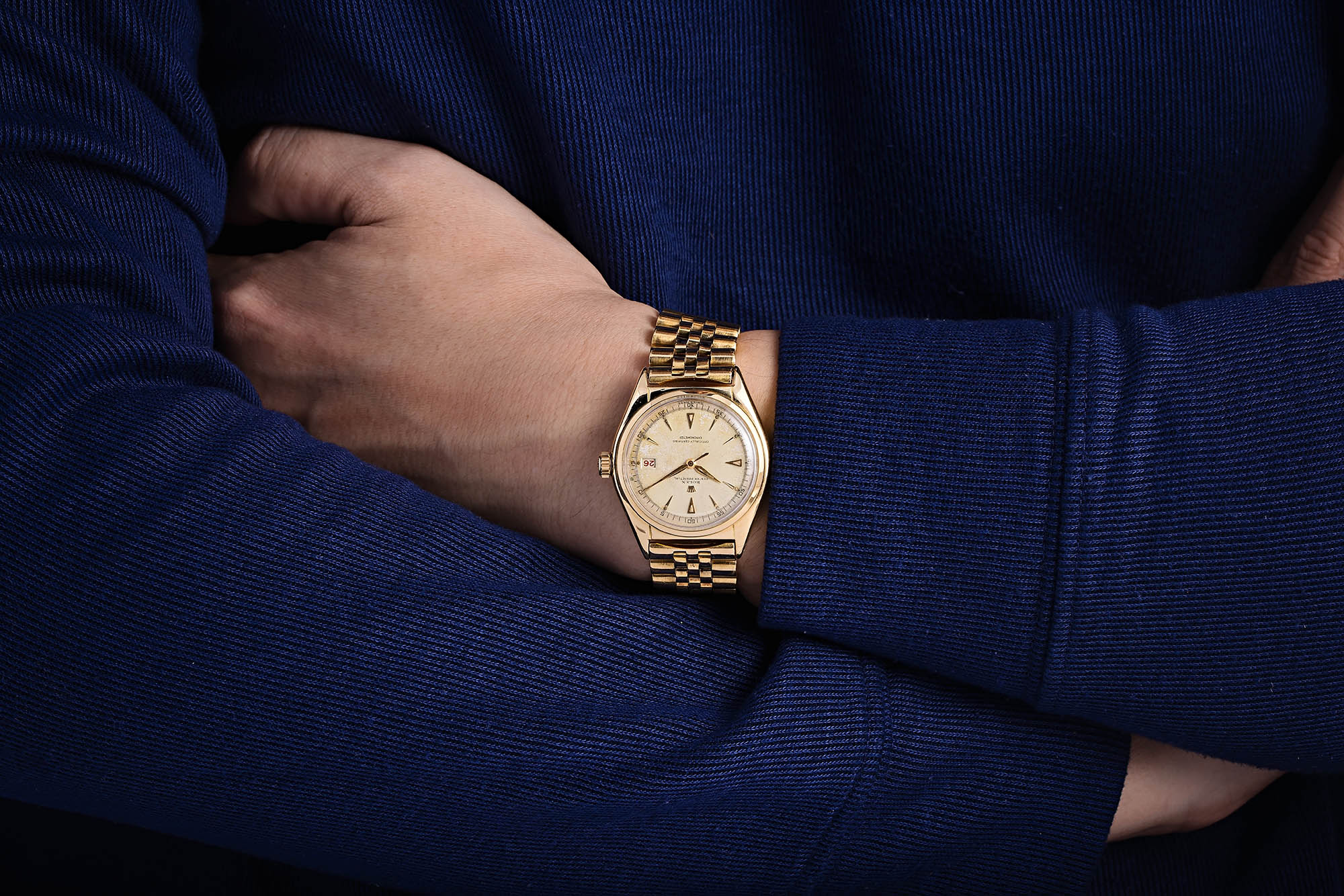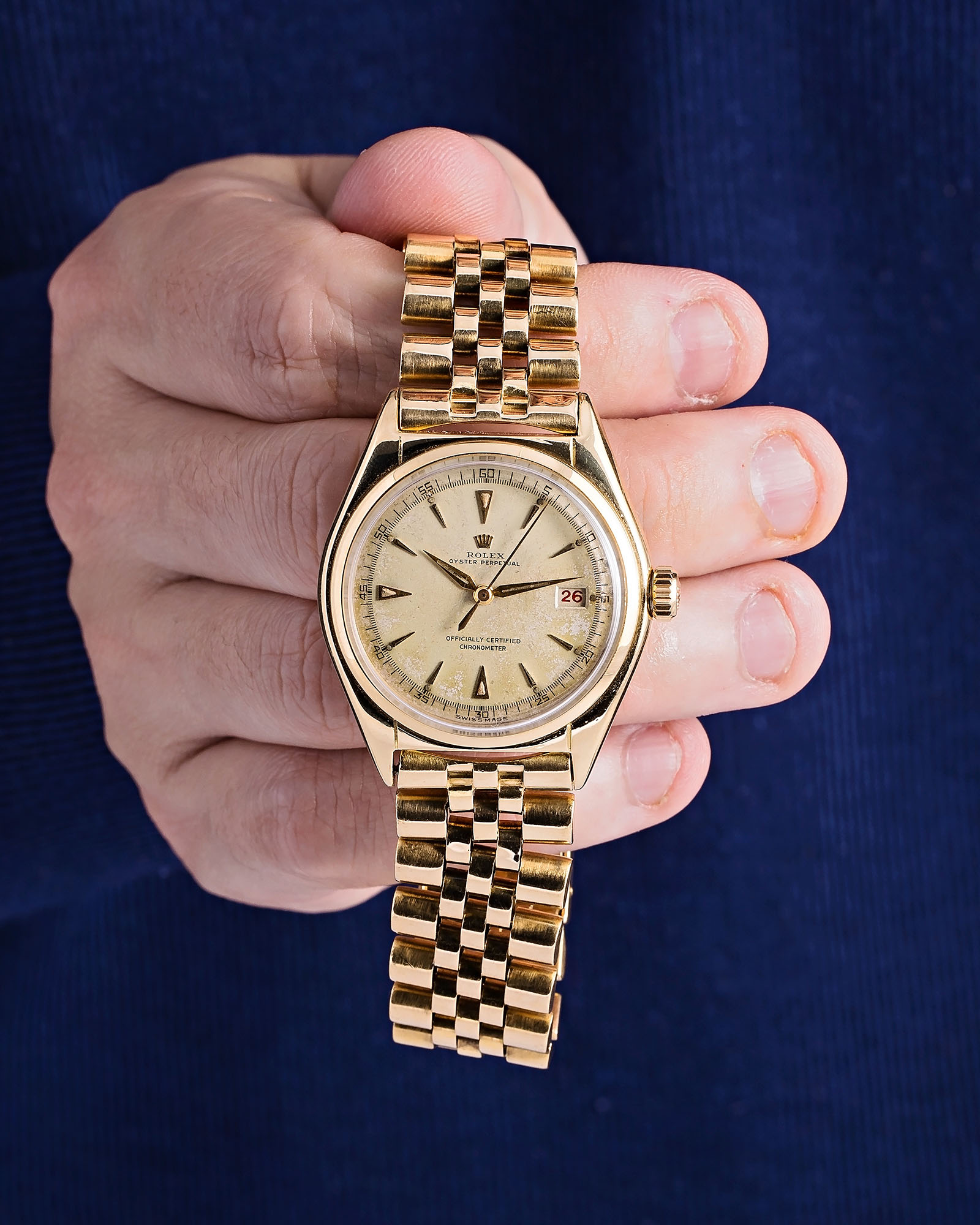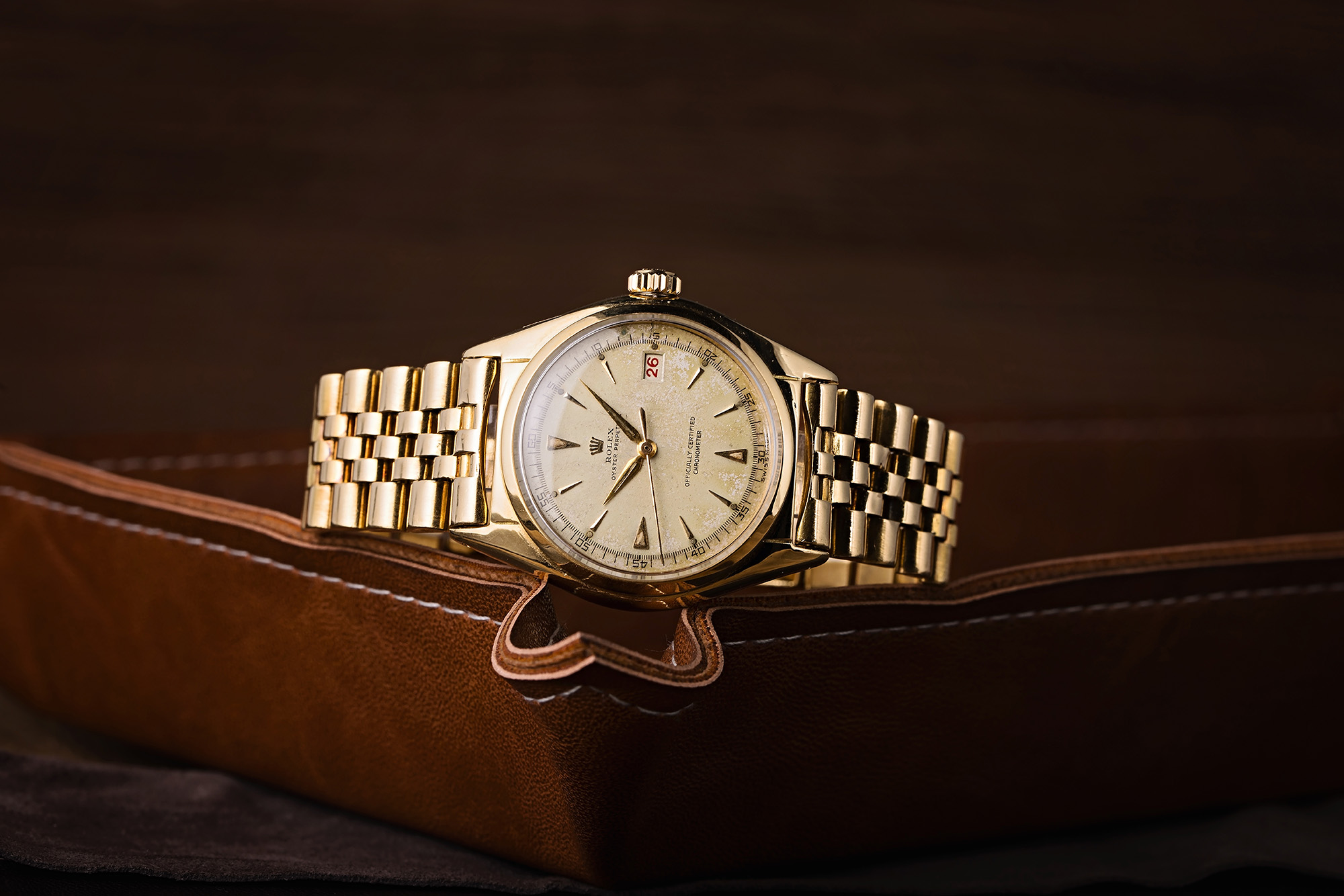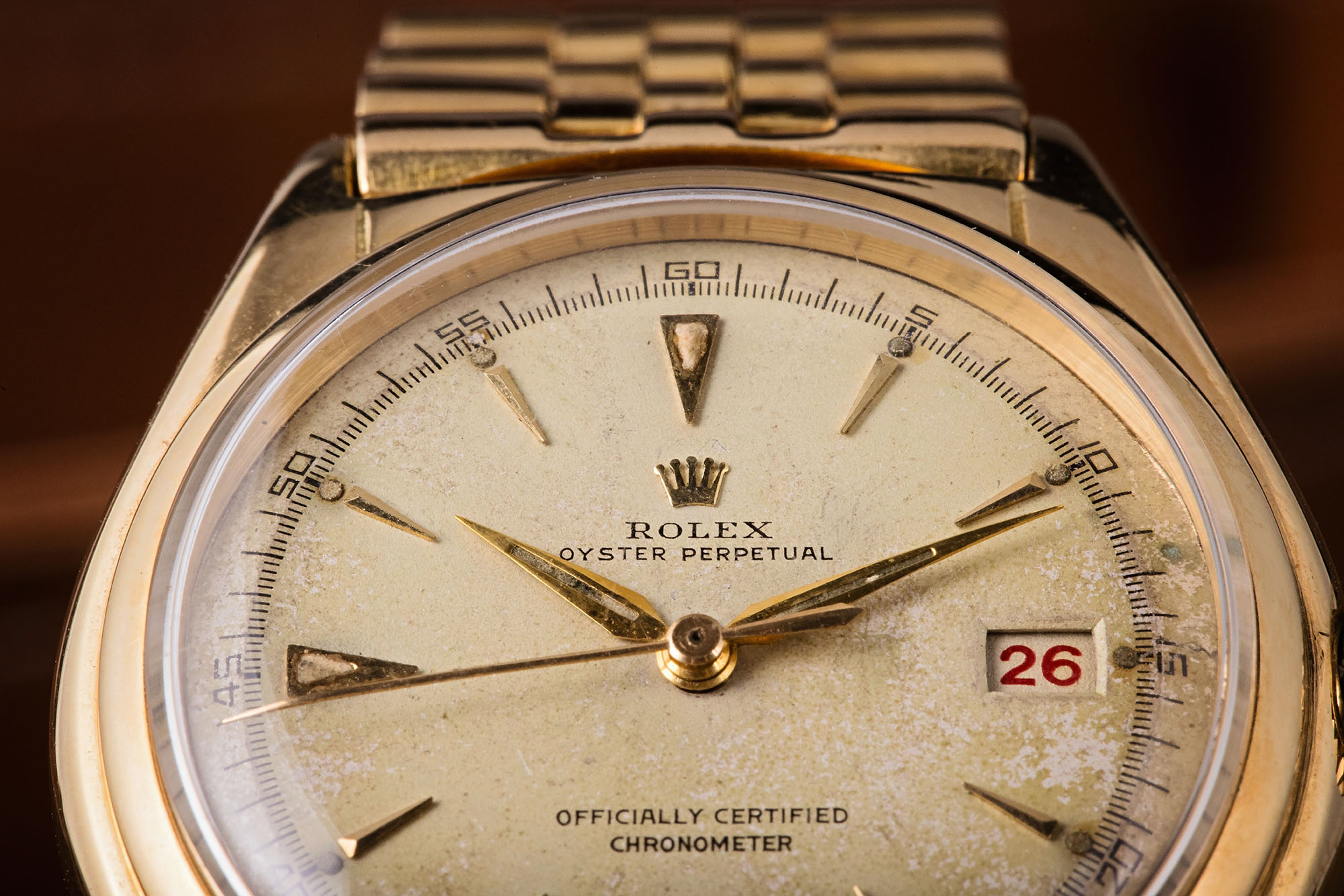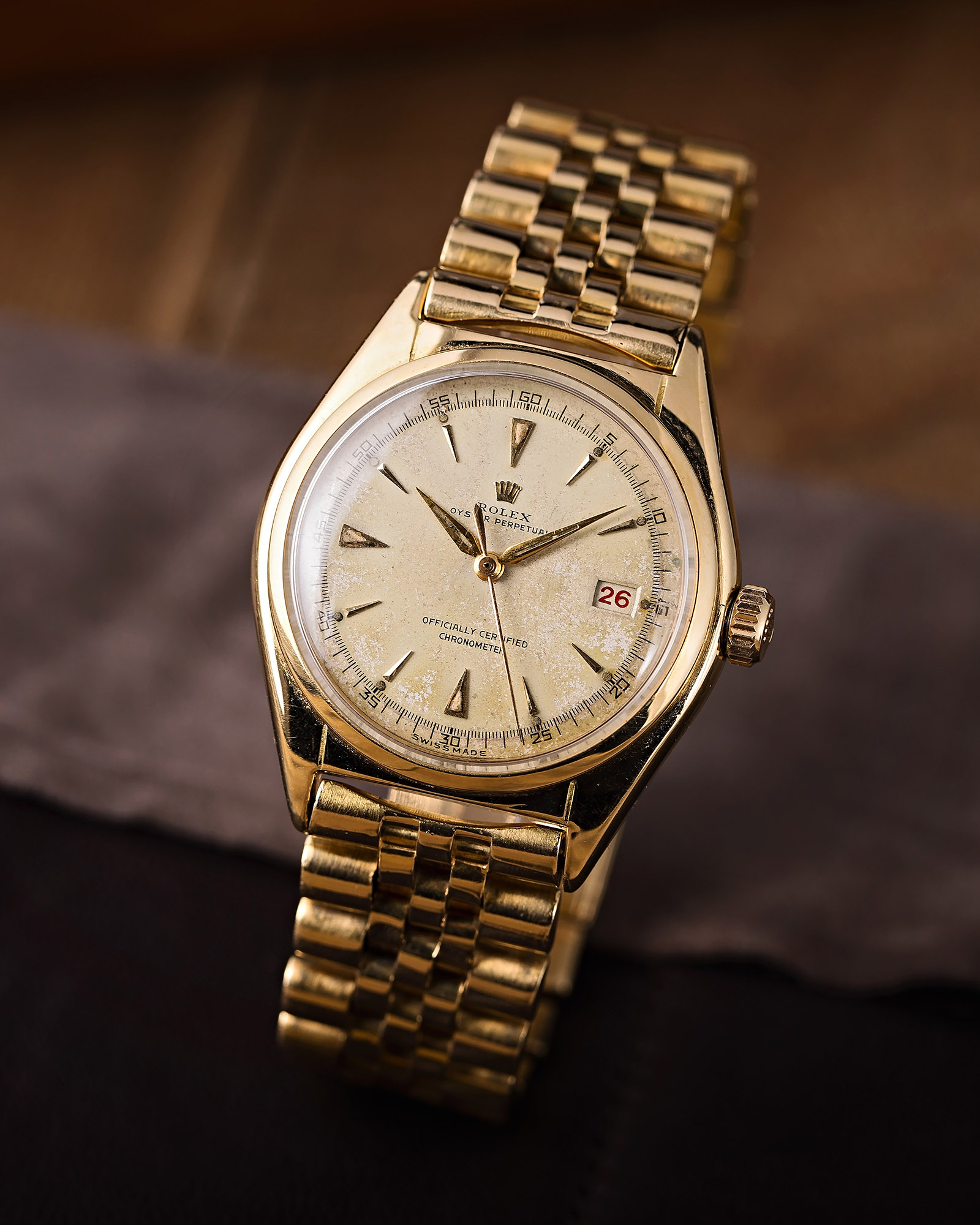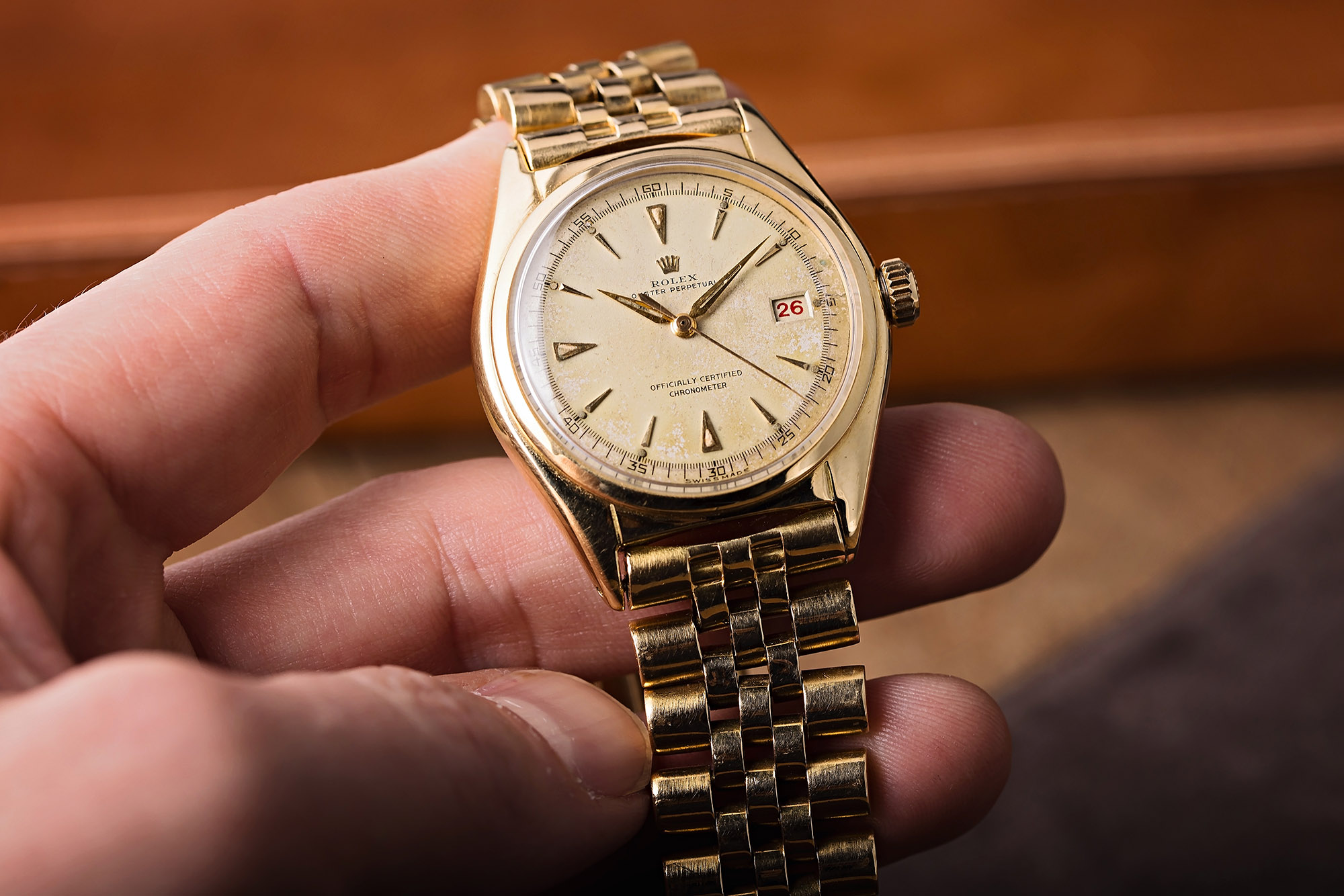
There’s a fair conversation to be had about what the most iconic Rolex product line truly is. On the sports side, both the Submariner and the Daytona have reasonable claims to the title, but on the less athletic side of Rolex, there’s arguably only one contender — the Datejust. The Datejust nameplate and its simple, refined presentation have been a cornerstone of Rolex’s lineup for many decades, and over the years the Datejust design has ingrained itself in the broader public consciousness in a way that few timepieces ever have. Given its long-running and diverse history, however, pinning down the origins of the Datejust is less clear-cut than many other famous watch lines. Rolex itself claims the Datejust began in 1945, but for several years afterward, the Datejust name did not appear on the watches themselves. Throughout the late ‘40s, Rolex produced an array of so-called “pre-Datejust” references, but perhaps the most influential and desirable of them all is this stunning 1949 Rolex Oyster Perpetual “Ovettone” Ref. 5030, brought to us by the team at Bob’s Watches. As a bridge between prewar and postwar Rolex design, as well as an immediate predecessor to the more familiar Datejust collection, this Ref. 5030 is a genuinely compelling study in how horological legends are developed and carries a rich history of its own as well.
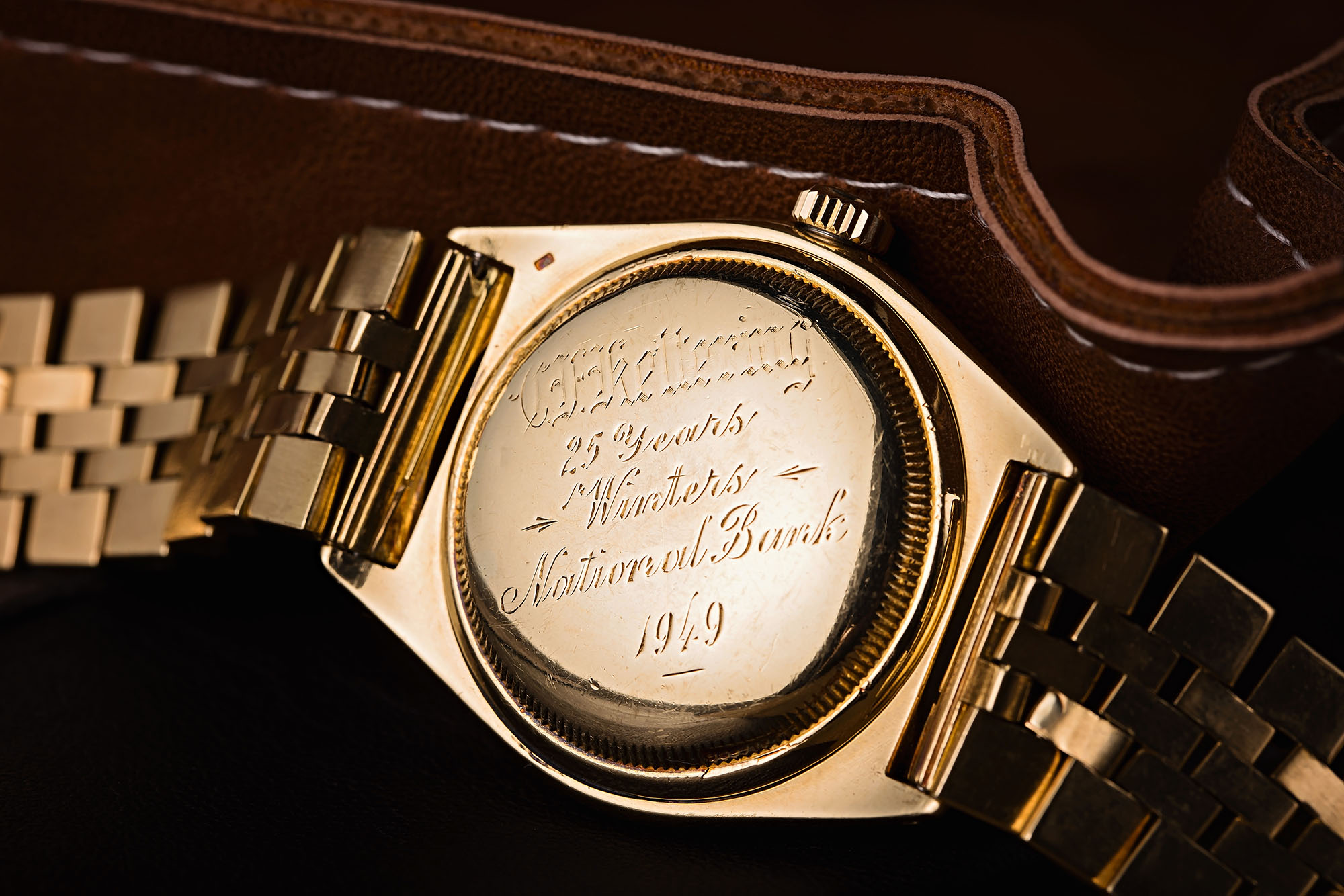
Even among “Ovettone” models, this particular Ref. 5030 has an impressive provenance. For those unfamiliar with the “Ovettone” family at large, these were a larger 36mm wide development of the classic “bubbleback” Oyster case design introduced in the mid-1940s. Named for the egg-like rounded side profile created by its deep caseback and tall domed crystal, the “Ovettone” has long been regarded as a pivotal milestone in the development of the Oyster case shape and remains a favorite among vintage connoisseurs to this day. This Ref. 5030 example, however, adds yet another layer of history to the mix. This watch was originally purchased in 1949 by American engineer Charles F. Kettering, inventor of both the electric starter motor for automobiles and the aerial missile, as a gift for banker Walter H.J. Behm to commemorate 25 years of service with Winters National Bank. With a beautifully executed, carefully preserved caseback engraving to commemorate this, this Ref. 5030 is a true piece of history on multiple levels.
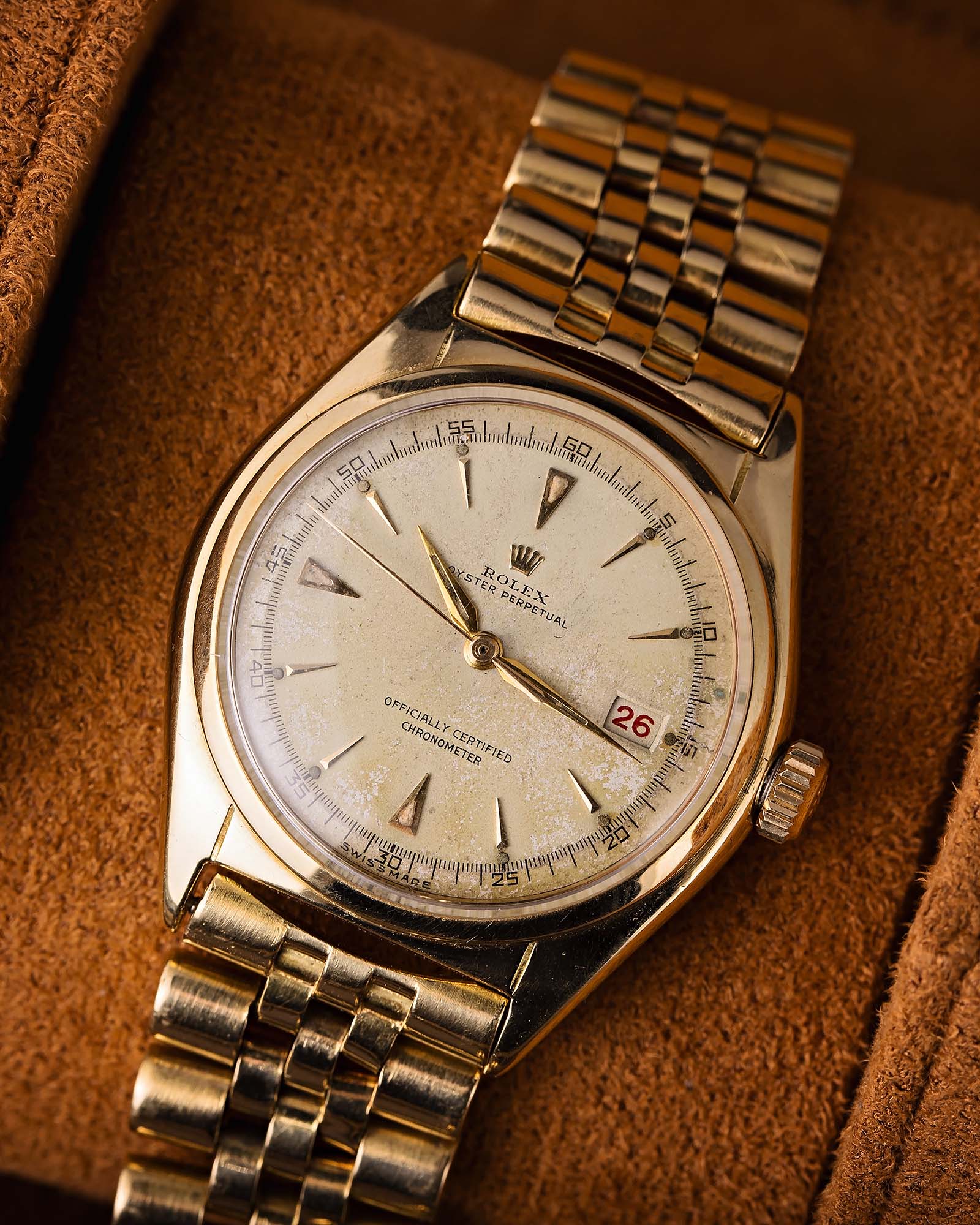
Rolex in the late ‘40s was a brand on the cusp of what it would eventually mature into, and this feeling of late adolescence shines through in the Rolex Oyster Perpetual “Ovettone” Ref. 5030’s 36mm wide 18K yellow gold case. There are a handful of holdovers from earlier “bubbleback” generations here, such as the squared-off area between the lugs, the rounded, bulging caseback, and the old-style “Rolex Oyster” signed crown, but by and large this is a case design that feels recognizable alongside the modern Oyster cases of the ‘50s and beyond. It’s softly elegant in the way that only watches from the ‘30s and ‘40s are, with a warmth and easy charisma that shines through the fully polished, gently preserved surface. Of course, with this being a “pre-Datejust” reference, there’s one area that enthusiasts are likely to scrutinize heavily – the bezel. This predates the emblematic fluted bezel motif that would go on to dominate public perception of the Datejust (while spawning an entire genre of imitators), but the narrow, low-profile smooth bezel here represents a different, equally enduring branch of Rolex case design.
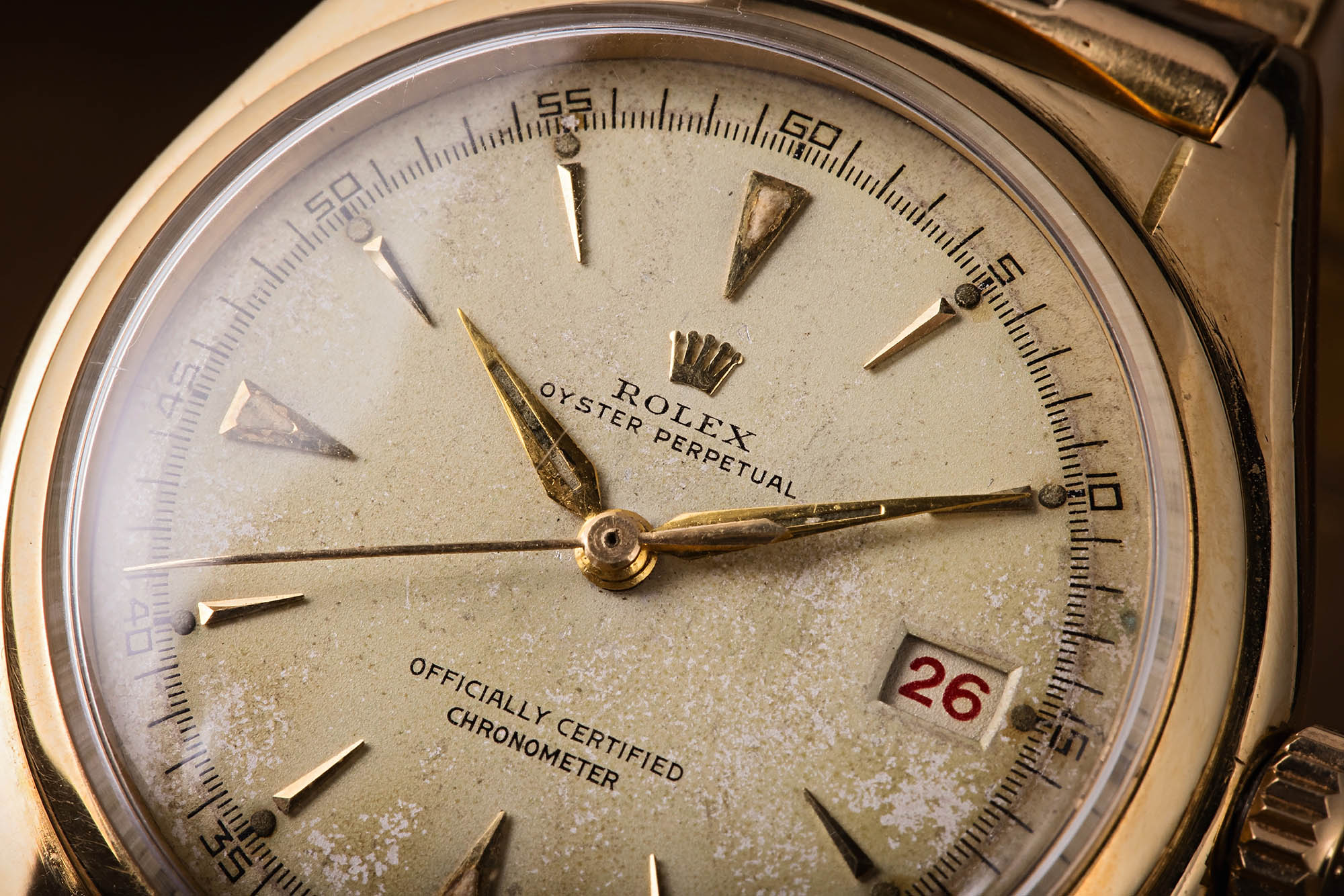
What lies beneath the Rolex Oyster Perpetual “Ovettone” Ref. 5030’s domed crystal is as developmentally important to the brand as the case. Sharp, dressy, and beautifully patinated from decades of wear, the cream-white matte dial shows a transitional moment for the brand. Early-midcentury Rolex design staples like the polished alpha handset are present here, along with a very early depiction of the triangular 12 o’clock marker that would go on to adorn countless dive watches. On the other hand, future Datejust hallmarks like the baton handset, rectangular applied indices, cyclops date magnifier, and the Datejust name itself have yet to make their arrival by this point. The date display, though, is an interesting focal point for this design. The Ref. 5030 uses a roulette date wheel, alternating between black and red text to keep the display fresh and visually engaging. It’s a small touch, but one that adds character.

The automatic movement inside the Rolex Oyster Perpetual “Ovettone” Ref. 5030 is equally historic, as well. This was the first chronometer-certified automatic movement to feature a date wheel, and while a date display is arguably the most pedestrian complication in the modern industry this was truly cutting-edge horology at the time. This particular Ref. 5030 rounds out its transitional look with an early representation of the now-classic five-link Jubilee bracelet. Rendered in case-matching polished gold, this familiar bracelet design continues the Ref. 5030’s mid-evolutionary style. The coronet emblem adorning the clasp, for example, is a broad, short rendition, while the end links are not yet fitted flush with the case.
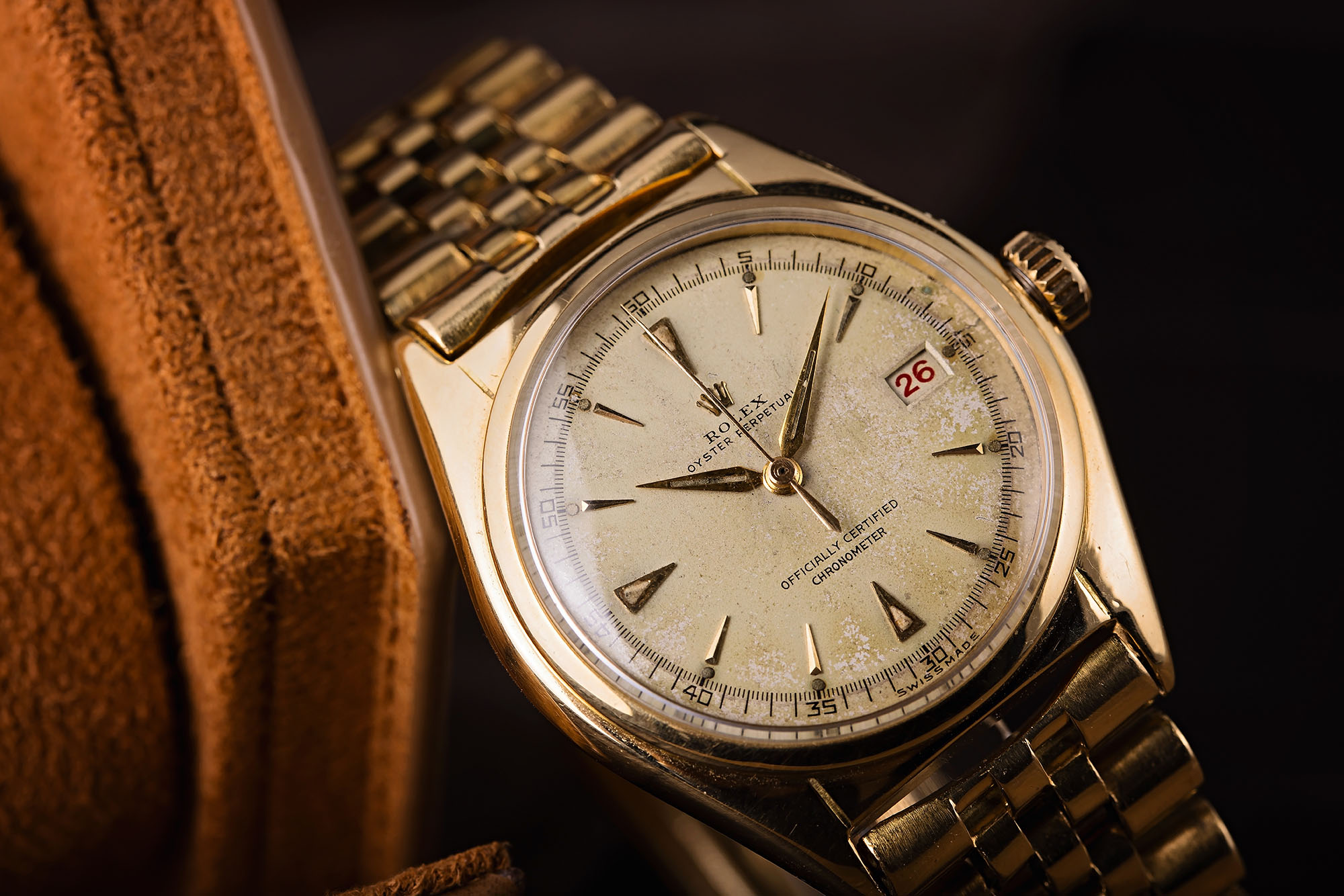
There’s no denying the Rolex Datejust family is immensely important, both inside the enthusiast community and the broader world. With such a monolithic, enduring nameplate, however, it can be difficult to imagine it in anything other than a familiar, unchanging form. This makes the Rolex Oyster Perpetual “Ovettone” Ref. 5030 such a fascinating piece of horological history, one that captures a fascinating early moment in the development of this line while presenting a unique legacy of its own. Beyond simply being a truly beautiful piece of midcentury watchmaking, this piece is a poignant reminder that even long-running, seemingly changeless product lines can often have a complex, fascinating path of development.

